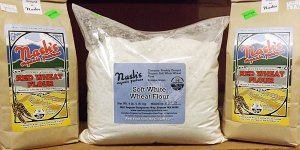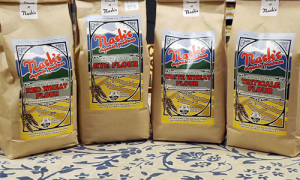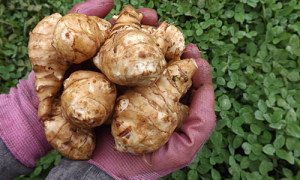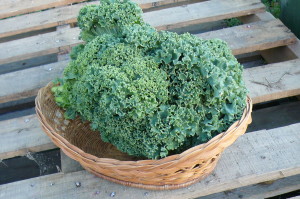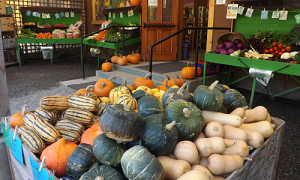1/4 cup butter
1 1/2 cups Nash’s white flour
1/2 cup Nash’s cornmeal (either coarse or medium grind)
2 teaspoons baking powder
1/4 teaspoon baking soda
1/2 teaspoon salt
2 tablespoons brown sugar, packed
1/2 cup pumpkin puree
3/4 cup plus 2 tablespoons apple cider or apple juice
Preheat the oven to 425 and oil a baking sheet. Cut the butter into small pieces and place in a medium bowl. Sift in the flour, cornmeal, baking powder, baking soda and salt. Add the brown sugar and mix until lump-free.
In a blender or food processor, combine the pumpkin puree and the cider or juice. Pour into the flour mixture and stir briefly, just until well blended. Drop the biscuits by 1/4 cups onto the baking sheet 1-2 inches apart.
Bake for about 20 minutes, until puffed and very slightly brown around the edges and a toothpick tests clean. Serve immediately.
This seasonal recipe comes from the Moosewood Restaurant New Classics cookbook.
Have you tried this recipe? Tell us how it turned out!


